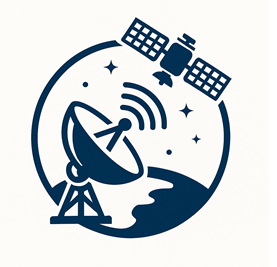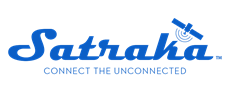
-
StatusOngoing
-
Status date2025-10-02
This project is to develop a cost-competitive, high-performance tracking-antenna system – for next-generation satellite broadband constellations (low Earth orbit (LEO) / medium Earth orbit (MEO)).
Key objectives:
- Provide a tracking-antenna solution that lowers the cost of user terminals to non-geostationary orbit (NGSO) satellite operators;
- Combine high performance with low cost;
- Develop and mature a patent-pending technology with a lightweight tracking system that delivers one-antenna solution for continuous satellite tracking and seamless handover.
Key technical and commercial challenges are:
- Technology Maturity and Market Awareness: The design is new and less known to the market. And the company itself has no prior track record in the space sector, which may slow customer adoption and raise investor caution;
- Intellectual Property Risks: Potential leak of design intellectual property (IP) or the possibility that the patent may not be granted or enforced internationally;
- Competitive Pressures: Incumbent mechanically steered antennas (MSAs) are established and trusted for high-gain applications. Flat panel / electronically steered antennas (FPAs) attract heavy VC funding and remain a perceived “future” technology;
- Engineering and Manufacturing Challenges: Designing a low-mass yet high-accuracy tracking system for continuous satellite tracking and handover.
Key benefits of the LUTA tracking-antenna are as following.
Performance and Functionality:
- High-gain, high-efficiency beams comparable to or better than large mechanically steered antennas (MSAs);
- Single-antenna continuous tracking and seamless satellite handover – eliminates the need for two separate antennas at a terminal;
- Lower power consumption than both MSAs and flat-panel antennas (FPAs).
Cost and Scalability:
- Significantly lower-unit cost (targeting a few thousand dollars for enterprise size);
- Simplified tracking mechanics.
Market and Deployment Advantages:
- Compact, easier site approval compared with large dual-antenna MSA setups;
- Broad compatibility with different satellite constellations (LEO/MEO) and frequency bands (Ku/Ka);
- Rapid rollout potential to underserved and remote regions, enabling mass-market broadband adoption.
Strategic and IP Strengths:
Patent-protected, innovative design offering a “sweet spot” between MSA performance and FPA low profile.
In short, LUTA delivers high-performance at low cost with simpler mechanics, giving satellite operators and end users a practical, scalable alternative to today’s expensive or low-efficiency tracking-antenna options.
LUTA key product features are as following.
Core Antenna Design:
- Lightweight and simplified actuator-based tracking system;
- Single-antenna solution: One beam for satellite tracking and a second beam for seamless satellite handover, eliminating the need for two large dishes.
Electrical / Radio Frequency (RF):
- Ku- and Ka-band operation (customer-specific) with circular polarisation;
- High gain and high efficiency comparable to mechanically steered antennas (MSAs);
- Compatible with customer-approved radio transceivers (BUC/LNA) and modems.
Mechanical and Environmental:
- Low-power consumption compared with both MSA and flat-panel antenna (FPA) solutions.
The system developed in this project functions as a user terminal that integrates the following:
- Ring-focus type reflector (TR) – creating a high-efficiency tracking beam;
- Feed System (FS) – includes feed horn, polarizer, and orthogonal mode transceiver (OMT) to set operating frequency, polarisation, and impedance match;
- Tracking System (TS) – lightweight, linear actuator-based, providing high-precision tracking;
- Mechanical and Support (M&S) – structural frame, boom, and mast providing rigidity and wind-load resistance while remaining lightweight;
- Control and Software (C&S) – electronics and software to manage satellite tracking and seamless handover, interfacing with customer modems;
- Radio Transceiver (RT) – customer-specified BUC/LNA assembly providing the RF link to the satellite network;
- Modem (MO) – customer-specified modem that connects user data traffic to the satellite network.
The project follows a structured technology development plan with six work packages. There are four milestones:
Milestone (MS) 1 Baseline Design Review (BDR) at month four to approve technical requirement specifications; verify preliminary design and technical trade-offs; confirm concept feasibility; identify critical points and risk-mitigation actions; establish the verification plan and draft test plans;
MS2 Critical Design Review (CDR) at month 11 to approve the design; assess compliance with all technical requirements and interfaces; release manufacturing, assembly, testing documentation.
MS3 Test Readiness Review (TRR) at month 16 to verify test documentation, procedures, schedules, and pass/fail criteria; confirm item build standard and test configuration; check acceptability of non-conformances, waivers, and deviations; ensure test facilities and personnel are ready.
MS4 RF at month 22 to present test or operational data; confirm that all deliverables are complete; outline future product-development strategy and estimate socio-economic impact.
The project is in the MS3 TRR stage, with key components and subsystems developed, simulated, and EQM developed and built. The current work focuses on RF and mechanical tests, completion of Gen antenna control unit development.
A real-world test is to follow.



